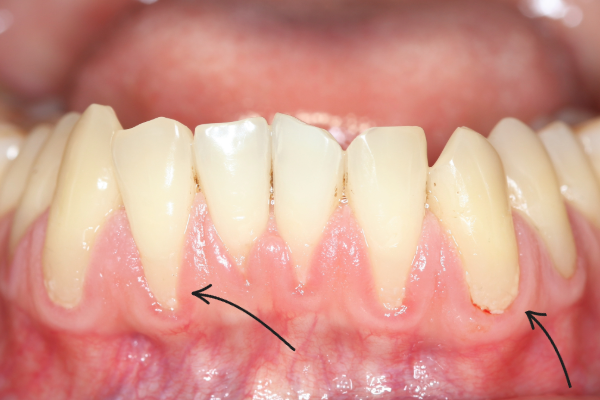Overbrushing teeth
Good oral hygiene is essential for maintaining a healthy smile, but did you know it’s possible to overdo it?
Yes, over brushing your teeth, a habit many might consider beneficial, can actually lead to dental problems. This comprehensive blog explores the negative effects of over-brushing, identifies the symptoms to watch out for, and provides actionable advice to ensure your oral health remains in top condition.
Plus, we’ve included a FAQs section to help clear up any confusion on the topic.

The fine line between clean and too clean
Brushing your teeth is undeniably important. However, applying too much zeal in your brushing routine can lead to unintended consequences. The enamel on your teeth, though the hardest substance in the human body, is not invulnerable. Excessive brushing can wear it down, leading to dental issues.
Symptoms of overbrushing teeth
Recognising the signs of over-brushing is the first step in correcting the problem. Common symptoms include:
- Receding gums
Gum recession occurs when the margin of the gum tissue that surrounds the teeth wears away or pulls back, exposing more of the tooth or the tooth’s root. This can give your teeth an elongated appearance, making them look longer than normal. Besides being a cosmetic concern, receding gums can lead to increased sensitivity because more of the tooth’s surface and root become exposed. The exposed areas are more susceptible to elements such as temperature and touch, which can cause discomfort or sharp pain. Moreover, gum recession creates pockets or gaps between the teeth and gum line, making it easier for disease-causing bacteria to accumulate. If left untreated, this can lead to more serious gum diseases and potential tooth loss.

2. Extra sensitive teeth
Tooth sensitivity is often a direct result of overbrushing. The excessive force and hard bristles can wear down the protective layer of enamel on your teeth, exposing the dentin beneath. Dentin contains microscopic tubules that lead to the nerve of your tooth. When exposed, these tubules allow heat, cold, acidity, or even sticky and sweet foods to stimulate the nerves inside your tooth directly, resulting in discomfort or sharp, temporary pain. Sensitivity can make it challenging to enjoy certain foods and drinks, significantly impacting your quality of life. It’s a clear sign that the enamel has been compromised, necessitating a change in your oral care routine to prevent further damage.
3. Bleeding gums
This can occur when the excessive force used during brushing damages the delicate gum tissue, leading to irritation and bleeding. Healthy gums should not bleed from regular brushing if you’re using the correct technique and a soft-bristled toothbrush. If you notice blood after brushing, it’s a clear sign that you may be brushing too hard or that your gums are in a state of inflammation, possibly due to overbrushing or a sign of gingivitis (early gum disease).
Bleeding gums can also make your mouth more susceptible to bacterial infections, as the open sores provide an entry point for bacteria. This underscores the importance of using a gentle brushing technique to maintain gum integrity and prevent the onset of more serious gum diseases, like periodontitis, which can lead to tooth loss and other health complications.
The right way to brush
- Choosing the perfect toothbrush
The selection of a toothbrush plays a vital role in the health of your teeth and gums. Soft bristles are recommended because they are gentle enough not to cause damage to the enamel or irritate the gums but still effective in removing plaque. Additionally, consider the size of the toothbrush head; it should comfortably fit in your mouth, allowing access to all surfaces of your teeth. For many, a toothbrush with a smaller head can provide better reach to the back teeth, especially for those with a smaller mouth.
- Brushing technique
The technique used when brushing is another crucial aspect for removing plaque without damaging the gums or enamel. Hold your toothbrush at a 45-degree angle to your gums, and gently move it in small circular motions. This technique helps to clean effectively beneath the gum line, a critical area that’s often missed or overbrushed with a back-and-forth motion. Ensure you brush all surfaces of each tooth – the outer surfaces, the inner surfaces, and the chewing surfaces. Being thorough doesn’t mean being rough; a gentle touch is key.
- Pay attention to the pressure
Applying too much pressure when brushing can lead to the symptoms of overbrushing discussed earlier. To avoid this, focus on the feeling of the bristles against your gums. They should gently massage, not scrub, your gum line. One tip to ensure you’re not using too much force is to hold your toothbrush with just your fingertips. This grip makes it harder to exert excessive pressure as compared to holding it in your fist.
- Time – 2 minutes, 2 times a day
Brushing for two minutes ensures that you’re spending enough time to thoroughly clean all areas of your mouth without overdoing it. Many electric toothbrushes come with built-in timers to help you track this time effectively. If you’re using a manual toothbrush, you might consider using a kitchen timer or a stopwatch on your smartphone. Divide your mouth into four quadrants – upper right, upper left, lower right, and lower left – and spend 30 seconds on each quadrant to ensure even cleaning.
When to see a dentist
If you’re experiencing any symptoms of overbrushing that we mentioned above or if you’re unsure about your overall brushing technique, it’s a good idea to see a dentist. They can provide personalised advice, tailored to your own needs, and help you adjust your routine for a healthy mouth.
When you visit a dentist or dental hygienist with concerns about overbrushing, they can perform a comprehensive examination of your mouth.
This examination might include checking for signs of gum recession, enamel wear, and sensitivity, which are common symptoms of overbrushing. Additionally, dentists can use specialised tools to measure the depth of gum pockets, which can indicate gum disease, and take X-rays to assess any underlying damage to the teeth and jawbone.
Conclusion
While it’s essential to brush your teeth regularly, more is not always better.
Overbrushing can lead to serious dental issues, but by following the guidelines shared in this blog, you can enjoy a healthy, beautiful smile without the risk of damage. Remember, gentle and consistent care is key. If you have any concerns about your oral health, don’t hesitate to reach out to a dental professional who can offer guidance tailored to your specific needs.
FAQs
Absolutely. Overbrushing can cause gum recession, enamel wear, and tooth sensitivity, amongst other issues.
Symptoms include receding gums, sensitivity to temperature and sweetness, and visibly worn enamel.
If your toothbrush bristles are fraying quickly or if you notice your gums are sore or bleeding, you might be applying too much pressure.
A soft-bristled toothbrush is best. For an even gentler clean, consider an electric toothbrush with a pressure sensor that alerts you if you’re brushing too hard.
Every three to four months, or sooner if the bristles start to fray. This ensures your brush is clean and effective.
